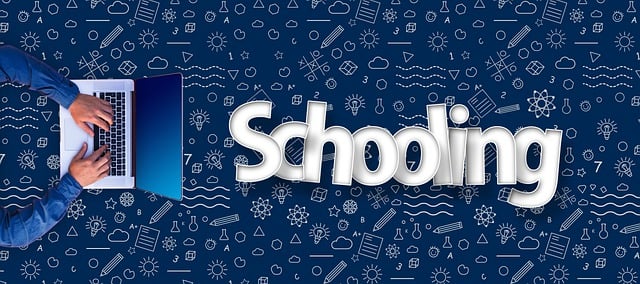Technical SEO is essential for optimizing image and video content, driving organic traffic, and enhancing user engagement. By focusing on file name optimization, alt tag usage, transcripts/closed captions, and keyword integration, multimedia becomes more accessible and understandable to both users and search engines. Tools like Google Search Console and analytics software help measure success, while compression tools improve website speed. Regularly reviewing KPIs ensures visual content's maximum potential in search engine rankings.
In today’s digital landscape, optimizing image and video content is crucial for boosting online visibility. This comprehensive guide explores essential Technical SEO strategies for multimedia elements. From understanding the fundamentals of Image and Video SEO to leveraging alt text, keyword optimization, and best practices for videos, this article equips you with actionable tips. Discover how to enhance user experience through media content while measuring success through performance analysis, ensuring your visual assets work as hard as they look.
Understanding Image and Video SEO: An Overview

Image and Video SEO is an essential aspect of modern digital marketing, focusing on optimizing visual content to enhance online visibility. It involves a deep understanding of how search engines crawl, index, and rank images and videos, ensuring your multimedia assets contribute positively to your website’s search engine results page (SERP) position. By implementing effective Image and Video SEO strategies, you can drive more organic traffic to your site and improve user engagement.
At its core, Technical SEO plays a pivotal role in this process. This includes optimizing file names, alt tags, titles, and captions for both images and videos. For instance, using descriptive and keyword-rich file names and alt text helps search engines understand the content of your visuals better. Additionally, ensuring that video transcripts and closed captions are added enhances accessibility and provides search engines with valuable context, ultimately improving your website’s overall SEO performance.
The Role of Alt Text in Technical SEO

Alt text, or alternative text, plays a pivotal role in Technical SEO for images and videos. It serves as a description that’s read by search engine crawlers when they can’t display an image or video, such as during indexing or on visually impaired user agents. Beyond accessibility, alt text is crucial for improving the visibility of multimedia content in search results, providing context to search engines about what the visual element represents.
For optimal Technical SEO, each image and video should have unique and descriptive alt text. This not only enhances crawlability but also increases the likelihood of rich snippets appearing in search results, enhancing the click-through rate. Additionally, it aids in building a more inclusive web experience by making content accessible to users with visual impairments who rely on screen readers that interpret alt text.
Optimizing Images for Search Engines

Optimizing images for search engines is a crucial part of Technical SEO, ensuring that visual content is accessible and understandable to both users and search engine algorithms. This involves more than just file name changes; it requires implementing various techniques to enhance visibility and performance. One key practice is incorporating descriptive alt text, which provides a textual alternative for images, conveying their content to search engines and users who may have visual impairments.
Additionally, optimizing image size and format can significantly impact website speed and overall user experience. Compressing images without sacrificing quality reduces file sizes, allowing pages to load faster. Search engines favor faster-loading sites, considering it an indicator of high-quality content delivery. Furthermore, using relevant keywords in image file names and titles helps search algorithms understand the context, thereby improving image ranking potential.
Video SEO Best Practices

Video content is increasingly becoming a dominant force in digital marketing, making Video SEO best practices crucial for maximizing visibility and engagement. To start, optimizing your video titles, descriptions, and tags is paramount. These elements act as a map for search engines, helping them understand your video’s subject matter. Use clear, descriptive language that includes relevant keywords without overstuffing; Google has algorithms in place to penalize keyword-stuffed content.
Beyond Technical SEO, transcribing your videos offers multiple benefits. Not only does it make your content more accessible, but it also provides search engines with text-based data to index. This can significantly improve video discoverability, especially for users searching using voice assistants or seeking closed captions. Additionally, integrating relevant keywords naturally within the transcript enhances both technical and on-page SEO, further elevating your video’s ranking potential.
Incorporating Keywords Strategically

Incorporating keywords strategically is a crucial aspect of Image and Video SEO, especially within the broader scope of Technical SEO. When optimizing visual content, it’s essential to weave in relevant keywords naturally and contextually. This means using descriptive language that accurately represents the image or video while also resonating with your target audience. For instance, if you have an image of a “vintage camera,” include terms like “vintage,” “retro,” or “old-school” alongside “camera” to enhance both searchability and user interest.
A strategic approach ensures that your keywords are not just randomly inserted but genuinely reflect the content’s quality and purpose. This practice helps search engines understand the context better, leading to improved indexing and visibility for your images and videos. As a result, when users search for specific terms related to your visual assets, they are more likely to discover your content, driving increased traffic and engagement.
Enhancing User Experience with Media Content

Media content, including images and videos, plays a pivotal role in enhancing user experience on websites. Optimizing this content for search engines, often referred to as Image and Video SEO, is an essential aspect of Technical SEO. By incorporating relevant keywords, alt tags, and descriptive captions, websites can ensure that visual assets are not only visually appealing but also accessible and searchable. This approach improves discoverability, allowing users to find relevant media easily, thereby boosting engagement and time spent on the site.
Furthermore, multimedia content adds diversity to a webpage, making it more interactive and user-friendly. Well-optimized images and videos can provide valuable context, illustrate complex concepts, or simply captivate viewers, ultimately leading to improved conversion rates and reduced bounce rates. Effective Image and Video SEO strategies not only help search engines understand the content better but also contribute to creating a seamless and enjoyable user journey.
Tools for Efficient Image and Video Optimization

In today’s digital landscape, efficient image and video optimization is a cornerstone of successful Technical SEO strategies. A variety of tools are available to streamline this process. For instance, platforms like Google’s Search Console and YouTube’s analytics offer detailed insights into how media content performs across search engines. These tools allow content creators and marketers to analyze key metrics such as click-through rates, watch time, and file size optimization, ensuring their images and videos resonate with audiences while adhering to search engine guidelines.
Furthermore, specialized image and video compression software plays a pivotal role in enhancing Technical SEO. Tools like TinyPNG, ImageOptim, and HandBrake enable users to reduce file sizes without compromising visual quality significantly. This is crucial for faster loading times, which directly impacts user experience and search engine rankings. By leveraging these tools, content creators can ensure their multimedia assets are optimized for both technical performance and user engagement.
Measuring Success: Analyzing Image/Video SEO Performance

Measuring success in Image and Video SEO involves delving into key performance indicators (KPIs) to assess the effectiveness of your optimization strategies. This process requires a comprehensive analysis that goes beyond basic traffic numbers. It’s crucial to examine engagement metrics such as click-through rates, average session duration, and bounce rates for both images and videos. These indicators provide insights into how well your visual content is resonating with audiences and guiding them towards desired actions.
Technical SEO plays a significant role here. Tools like Google Analytics and Search Console offer detailed reports on crawl errors, indexing issues, and other technical problems that might hinder your image and video content from reaching its full potential. Regularly reviewing these reports allows you to identify and address challenges promptly, ensuring optimal visibility and performance for your visual assets in search engine results.
